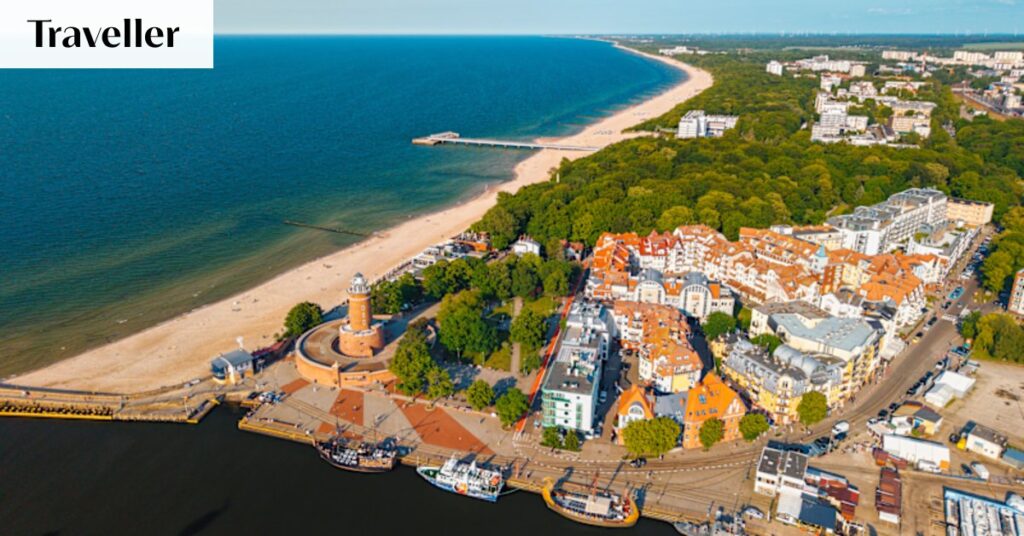
The Baltic region, often overshadowed by its southern European counterparts, is emerging as a hotspot for travelers seeking unique experiences away from the bustling crowds. In 2024, tourist numbers to Poland’s Baltic region surged by 30%, while Latvia and Lithuania also reported significant increases in visitors. This shift is driven by a combination of factors, including the allure of the Nordic lifestyle, savvy social media campaigns by Baltic states, and the impact of Mediterranean heatwaves and wildfires prompting travelers to seek cooler climates.
Despite the unfortunate restriction on travel to St. Petersburg, the Baltic Sea remains a treasure trove of destinations, offering a blend of natural beauty, rich history, and cultural vibrancy across eight nations: Denmark, Estonia, Finland, Germany, Latvia, Lithuania, Poland, and Sweden.
Exploring the Islands
The Baltic Sea Cycle Route, stretching 9,100 kilometers through nine countries, offers a challenge for the adventurous. For those seeking a more leisurely pace, the 135-kilometer High Coast Trail in Sweden provides breathtaking views of World Heritage post-glacial landscapes. Alternatively, scenic train rides from Helsinki to Joensuu or along Sweden’s Kinnekulle line offer a more relaxed exploration.
Highlights of the Kiel Canal
Germany’s Kiel Canal, the world’s busiest sea canal, connects the Baltic to the North Sea. A cruise ship journey through the canal offers picturesque views of farmland, villages, and canal-side beer gardens, with the canal’s gentle curves mimicking a river’s flow. Visitors can explore Kiel’s wartime history at the Laboe Naval Memorial and enjoy modern art at the Kunsthalle.
Savoring Baltic Cuisines
Baltic cuisine, often overshadowed by its Nordic counterpart, is rich and rustic, celebrating local traditions of pickling, fermenting, and foraging. Visitors can indulge in herring cakes, beef stews, and smoked fish at markets like Riga Central Market and Helsinki’s Market Square.
Poland’s Culinary Delights
Poland’s cuisine offers hearty home-style dishes such as pierogi, sausages, and potato pancakes. Gdansk’s culinary scene is gaining recognition, with Eliksir earning Poland’s first Michelin Green Star for sustainability and Arco by Paco Pérez receiving a Michelin star for its innovative menu.
Unveiling National Parks
The Baltic region boasts stunning national parks, from Estonia’s Lahemaa and Matsalu to Latvia’s Kemeri. These parks offer diverse landscapes and wildlife, including bears, lynx, and wetland birds. Sweden’s Kosterhavet Marine National Park provides opportunities for hiking, boating, and diving.
The Curonian Spit Adventure
Lithuania’s Curonian Spit, a 50-kilometer stretch of sand dunes and pine forests, is home to 300 bird species and other wildlife. Visitors can enjoy a scenic hike along the Curonian Lagoon walkway and explore the Hill of Witches, featuring over 100 wood-carved sculptures depicting folk art and mythology.
Cultural and Architectural Treasures
The Baltic region is rich in cultural heritage, from the Vasa Museum in Stockholm to Riga’s art nouveau architecture. The Vasa Museum, showcasing the world’s oldest complete ship, offers a glimpse into 17th-century naval history, while Riga’s streets are lined with elaborate art nouveau buildings.
Riga’s Architectural Wonders
Riga’s art nouveau district, with its ornate buildings adorned with statues and friezes, is a must-see. The House of the Blackheads, a medieval building with its extravagant design, is a highlight of the city’s UNESCO-listed old town.
As the Baltic region continues to gain popularity, it offers travelers a chance to explore lesser-known destinations filled with natural beauty, rich history, and vibrant culture. Whether cycling along the Baltic Sea, savoring local cuisines, or exploring national parks, the Baltic promises unforgettable experiences for those willing to venture north.







